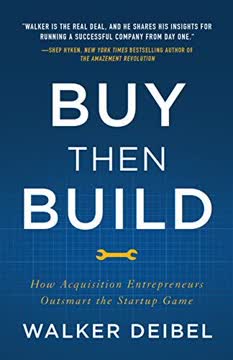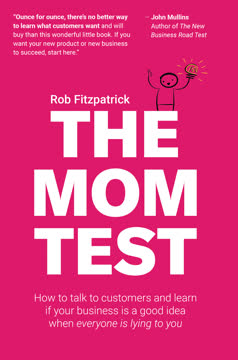Key Takeaways
1. Price is the most powerful profit driver, often underestimated by managers
"Price is the most effective profit driver."
Profit impact. A small change in price can have a dramatic effect on profits. For example, a 2% price increase can lead to profit increases of over 10% for many companies. This is because price changes directly affect the bottom line, unlike volume or cost changes which have less direct impacts.
Managerial focus. Despite its importance, managers often neglect pricing:
- 70% of time spent on cost issues
- 20% on volume
- Only 10% on pricing
Unique advantages of price:
- High elasticity (2-3 times higher than advertising or sales force)
- Quick implementation
- No upfront investment required
2. Understanding customer value perception is crucial for effective pricing
"Only perceived value counts."
Value-based pricing. The price a customer is willing to pay reflects their perceived value of the product or service. This perceived value is subjective and can be influenced by factors beyond the product itself.
Three key tasks for companies:
- Create value through quality, performance, and innovation
- Communicate value effectively through marketing and branding
- Retain value by ensuring lasting positive perceptions post-purchase
Value communication example: General Electric effectively communicates the value of its energy-efficient products by showing long-term cost savings in dollars, making the benefits tangible to customers.
3. Psychological factors significantly influence pricing strategies
"The perception of prices is no different than the perception of other stimuli."
Behavioral pricing insights:
- Prestige effect: Higher prices can increase perceived quality and desirability
- Anchor effects: Initial price points strongly influence perceptions of value
- Prospect theory: Losses are felt more strongly than equivalent gains
Practical applications:
- Luxury goods can increase sales by raising prices
- The "magic of the middle" pricing strategy
- Framing price changes as gains or losses to influence customer behavior
Caution required. While behavioral pricing offers valuable insights, it should complement rather than replace traditional economic principles in pricing decisions.
4. Price positioning (high or low) is a fundamental strategic decision
"Whether a company selects a high-price or low-price positioning is one of its most fundamental strategic decisions."
Low-price success factors:
- Extreme efficiency and cost control
- Adequate and consistent quality
- Strong focus on core products
- High growth and revenue focus
Premium pricing success factors:
- Superior value and innovation
- Strong brand and communication
- Consistent high quality
- Avoidance of discounts and promotions
Luxury pricing considerations:
- Extremely high quality and prestige
- Limited production to maintain exclusivity
- Price as a signal of quality and status
5. Price differentiation is key to maximizing profit potential
"Going from the profit rectangle to the profit triangle."
Profit potential. A uniform price captures only about half of the total profit potential in a market. Price differentiation allows companies to capture more of this potential.
Differentiation strategies:
- Multi-dimensional pricing (e.g., fixed + variable components)
- Bundling and unbundling
- Time-based pricing (e.g., peak vs. off-peak)
- Customer segment-based pricing
Implementation challenges:
- Requires detailed understanding of customer willingness to pay
- Need for effective "fencing" to prevent arbitrage
- Balancing complexity with customer acceptance
6. Pricing innovations can create new revenue streams and business models
"New ideas, systems, and methodologies are sprouting up all the time on how one can gather information about prices and set them."
Innovative pricing models:
- Pay-per-use: Charging based on actual usage rather than ownership
- Freemium: Basic version free, premium features paid
- Dynamic pricing: Real-time price adjustments based on demand
- Subscription models: Regular payments for ongoing access or services
Technology enablers:
- Big data and analytics for better price optimization
- Internet and mobile platforms for increased price transparency
- IoT devices enabling new usage-based pricing models
Implementation considerations:
- Align pricing model with customer needs and preferences
- Ensure technical feasibility and operational efficiency
- Consider potential cannibalization of existing revenue streams
7. Effective pricing during crises and price wars requires strategic thinking
"From a profit perspective, it is better in a time of crisis to suffer a volume decline than a price decline."
Crisis pricing strategies:
- Avoid knee-jerk price cuts that erode profitability
- Consider non-price alternatives (e.g., additional services or products)
- Look for selective price increase opportunities in less visible areas
Managing price wars:
- Understand root causes (often overcapacity or slow growth)
- Avoid aggressive retaliation that escalates the conflict
- Use signaling to communicate pricing intentions to competitors
Long-term considerations:
- Address underlying industry issues (e.g., overcapacity)
- Maintain price discipline to preserve long-term profitability
- Balance short-term pressures with long-term strategic goals
Last updated:
FAQ
What's Confessions of the Pricing Man about?
- Focus on Pricing Dynamics: The book explores how prices influence every aspect of business and consumer behavior, emphasizing the importance of understanding pricing strategies for competitive advantage.
- Author's Journey: Hermann Simon shares his personal journey from a farmer's son to a global pricing expert, detailing his experiences and insights gained over decades in pricing consulting.
- Real-World Examples: It includes case studies from various industries to illustrate how effective pricing can lead to significant financial success or failure.
- Psychology of Pricing: The book examines the psychological aspects of pricing, including how consumer perceptions and behaviors influence pricing strategies.
Why should I read Confessions of the Pricing Man?
- Expert Knowledge: Hermann Simon is a leading authority on pricing, and his insights are backed by extensive research and real-world applications.
- Improving Profitability: The book offers actionable strategies that can help businesses maximize profits through effective pricing.
- Navigate Pricing Challenges: It addresses common pricing challenges faced by companies, especially during crises or competitive pressures.
- Behavioral Insights: It delves into the psychology of pricing, helping readers understand consumer behavior and how perceptions of value affect purchasing decisions.
What are the key takeaways of Confessions of the Pricing Man?
- Price Equals Value: The book emphasizes that the price a customer is willing to pay reflects their perceived value of a product or service.
- Pricing Power: Simon discusses the importance of pricing power in determining a company's profitability, stating it as a crucial business decision.
- Value-Based Pricing: Understanding and communicating the value of products to customers is essential for setting prices that reflect the true worth of the offering.
- Avoid Price Wars: Engaging in price wars can lead to long-term profit erosion, and companies should focus on maintaining price discipline.
What are the best quotes from Confessions of the Pricing Man and what do they mean?
- "Profit is a condition of survival.": This quote highlights the essential role of profit in ensuring a business's longevity and ability to thrive in competitive markets.
- "Everything revolves around prices.": This underscores the centrality of pricing in business strategy, indicating that every financial outcome is influenced by pricing decisions.
- "Good pricing has three prerequisites: create value, quantify value, and communicate value.": This quote encapsulates the essence of effective pricing, emphasizing the need to understand and convey the value of a product.
- "In a war, the atomic bomb and price are subject to the same limitation: both can only be used once.": This metaphor illustrates the destructive nature of price wars.
How does Hermann Simon define "smart pricing" in Confessions of the Pricing Man?
- Strategic Pricing Approach: Smart pricing involves setting prices based on a deep understanding of customer value and market dynamics.
- Behavioral Insights: The book incorporates behavioral economics to explain how consumers perceive prices and value.
- Long-term Focus: Simon emphasizes that smart pricing is about creating sustainable pricing strategies that foster customer loyalty and long-term profitability.
What role does psychology play in pricing according to Confessions of the Pricing Man?
- Consumer Perception: Consumers often use price as a proxy for quality, leading to the "prestige effect" where higher prices can increase demand for luxury goods.
- Placebo Effect: Consumers may perceive a product as more effective or valuable simply because of its higher price.
- Anchoring and Decision Making: Price anchors influence consumer choices, showing that the context in which prices are presented can significantly affect purchasing behavior.
What are the different pricing strategies discussed in Confessions of the Pricing Man?
- Low-Price Strategy: Companies like Aldi and Ryanair implement low-price strategies by focusing on efficiency and cost management.
- Premium Pricing: Brands like Apple and Gillette leverage premium pricing by offering superior value and innovation.
- Luxury Pricing: Exclusivity and brand prestige play crucial roles in justifying high prices, as seen with brands like Rolex and Cartier.
How does Confessions of the Pricing Man suggest companies should approach price increases?
- Impact on Profits: Even a small price increase can significantly boost profits, emphasizing the importance of understanding price elasticity.
- Customer Reactions: Companies should carefully consider how customers will respond to price changes to avoid lost sales and market share.
- Strategic Communication: Communicating the reasons for price increases effectively is crucial to maintaining customer trust and loyalty.
How can businesses ensure they are setting optimal prices according to Confessions of the Pricing Man?
- Understand Customer Value: Businesses need to deeply understand the perceived value of their products to set prices that align with customer expectations.
- Analyze Market Dynamics: Continuously analyzing market conditions and competitor pricing helps remain competitive and responsive to changes.
- Implement Pricing Processes: Establishing structured pricing processes and guidelines can help make informed pricing decisions.
How does Hermann Simon define market-based price setting in Confessions of the Pricing Man?
- Demand Curve Consideration: Effective pricing requires understanding the demand curve and how customers respond to different price levels.
- Avoiding Cost-Plus Pricing: Simon argues against relying solely on cost-plus pricing, advocating for demand-driven pricing strategies.
- Empirical Analysis: The book advocates for empirical analysis to determine optimal pricing, using data to inform decisions.
What is the significance of price elasticity in Confessions of the Pricing Man?
- Understanding Consumer Sensitivity: Price elasticity measures how sensitive consumers are to price changes, helping businesses set prices that maximize revenue.
- Strategic Pricing Decisions: Different products have varying price elasticities, which should inform pricing strategies.
- Impact on Profitability: Understanding price elasticity can lead to better profit margins by adjusting pricing strategies based on elasticity.
How can companies avoid price wars according to Confessions of the Pricing Man?
- Focus on Value Competition: Emphasizing value rather than price in competitive strategies helps differentiate offerings and reduces the likelihood of price wars.
- Effective Communication: Clear communication about pricing strategies can help manage customer expectations and competitor reactions.
- Set Realistic Goals: Avoid setting unrealistic market share targets that encourage aggressive pricing, focusing instead on sustainable growth and profitability.
Review Summary
Confessions of the Pricing Man is highly praised for its comprehensive insights into pricing strategies and their impact on business success. Readers appreciate the practical examples, real-world case studies, and actionable takeaways. The book is recommended for CEOs, executives, and entrepreneurs, offering valuable lessons on profit maximization, price elasticity, and the psychology of pricing. While some find certain sections theoretical or dated, most reviewers consider it an essential read for understanding the crucial role of pricing in business operations and profitability.
Similar Books








Download PDF
Download EPUB
.epub digital book format is ideal for reading ebooks on phones, tablets, and e-readers.




